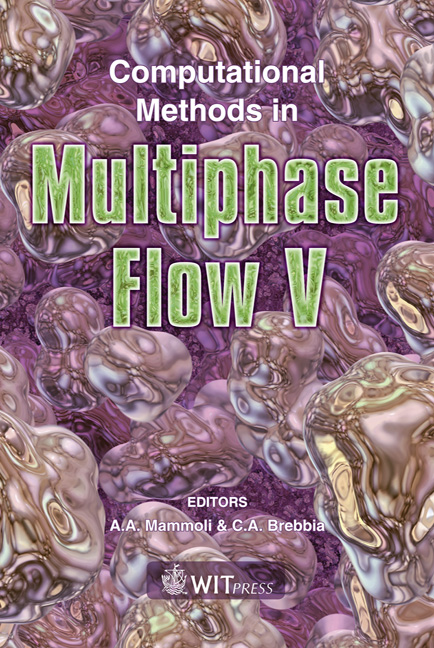Effect Of Relative Motion Between Bubbles And Surrounding Liquid On The Reynolds Stress As A Mechanism Controlling The Radial Gas Holdup Distribution
Price
Free (open access)
Transaction
Volume
63
Pages
14
Page Range
263 - 276
Published
2009
Size
566 kb
Paper DOI
10.2495/MPF090231
Copyright
WIT Press
Author(s)
K. Ueyama
Abstract
Relations are derived between time-averaged quantities of bubble turbulence, liquid velocity, static pressure and gravitational force, based on a careful treatment of the Navier-Stokes equations with certain approximations. The liquid phase is modeled as a combination of a bulk phase and a cloud phase. Timeintegration of the substantial derivative term in the Navier-Stokes equation for the cloud phase yields the difference between the total convective transport of liquid momentum from the cloud phase to the bulk phase and that from the bulk phase to the cloud phase, throughout the time of integration. The difference can be interpreted as bubble turbulence entering into the bulk phase, which should be convectively transported in the bulk phase. Finally, relations between timeaverages of the bubble turbulence, liquid velocity, static pressure and gravitational force are obtained through time-integration of the Navier-Stokes equation for the cloud phase. The resulting equation can be used to deduce, analytically or numerically, the macroscopic properties of gas-liquid multiphase flow in combination with a two-fluid model equation, for instance. These equations are applied to recirculating turbulent flow in bubble columns operating at high gas feed rates, and together with a simple model for the bubble turbulence we derive the well-known parabolic distribution of gas holdup. Keywords: gas-liquid multiphase flow, macroscopic property, time-average, Navier-Stokes equation, cloud phase, gas holdup distribution, two-fluid model, recirculating turbulent flow.
Keywords
gas-liquid multiphase flow, macroscopic property, time-average, Navier-Stokes equation, cloud phase, gas holdup distribution, two-fluid model, recirculating turbulent flow





